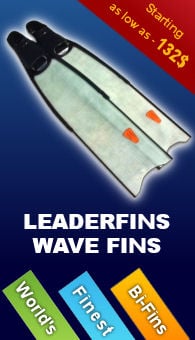Fitness And Daily Workout
Keeping the freedivers body flexible and in good shape will enable him to move with greater ease underwater and develop his breath holding skills more efficiently. The following article will examine three methods of training for breath hold diving on the surface - swimming, running and stretching. (Other surface activities that may help the freediver to develop his skills include but are not limited to cycling, rowing, skiing, climbing etc.)
Introduction
Surface training has two main goals - the development of an anaerobic capacity (the ability to perform an activity without the presence of oxygen) and the development of aerobic power (VO2MAX). In many cases aerobic power is being neglected when training for breath holding, it is however a vital part of the training process. VO2MAX is a formula which expresses the amount of oxygen that the muscles can turn into energy in a certain amount of time. This article will examine three methods of surface training: swimming, running and stretching.
Aerobic Power
A person with a good aerobic power holds several characteristics which help him while performing a breath hold : high red blood cells count, high levels of hemoglobin, slower heart rate while resting and a higher energy capacity due to aerobic training.
Anaerobic Capacity
Training anaerobic capacity over a period of time enhances the freedivers ability to tolerate higher levels of lactic acid - which can be formed, for example, from rapid movement of the legs on ascend from depth or any other muscle activity which is performed when no oxygen is present.
Attention
It is very important to keep the different body muscles flexible (stretching is an important part of every training sessions and must be performed at the end of it) and to accustom the heart to working under stress. The training methods described in the following chapter are to be performed while gradually increasing intensity and difficulty level - according to your personal ability - the figures in the exercises below are purely for illustration - and should be altered according to your personal ability while maintaining the same ratio between the different figures shown in the examples.
Wednesday, March 26, 2008
Training - Introduction
Subscribe to:
Post Comments (Atom)








No comments:
Post a Comment
Note: Only a member of this blog may post a comment.